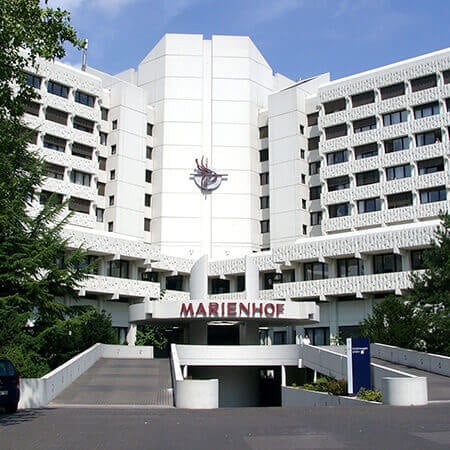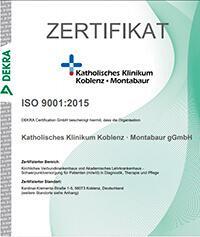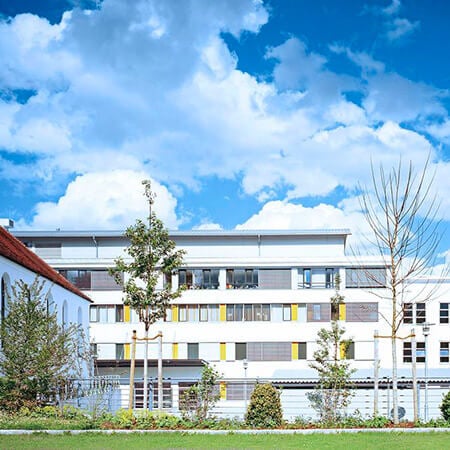Meniscus tear is the most common knee injury. The lateral meniscus is more often damaged. It is affected in 80-85% of cases of meniscus injuries. The medial meniscus is damaged less often, but its tears are more severe. They often lead to osteoarthritis deformans of the knee. The treatment of pathology mainly involves the use of surgical techniques. Doctors abroad perform minimally invasive surgery using arthroscopy. The preference is given to knee meniscus repair, rather than the removal of its damaged part, since in this case the best functional outcomes and the minimum risk of developing knee arthrosis are achieved.
Content
- Diagnostics
- Conservative treatment
- Surgical treatment
- What to choose: meniscal resection or repair
- Meniscal repair
- Meniscal resection
- Meniscal transplantation
- Why is it worth undergoing treatment abroad
- Treatment in Europe at an affordable price
Diagnostics
With a knee injury, these are not only the menisci that are always damaged. Ligaments are also often affected, most often the anterior cruciate ligament. Diagnostics is carried out not only to clarify the nature of the meniscus tear, but also to detect or exclude concomitant injuries.
Both invasive and non-invasive diagnostic methods can be used. The most informative method is arthroscopy. The doctor may puncture the knee to insert a tiny video camera into the joint and examine the inner side of the joint.
However, most patients undergo diagnostics with the use of non-invasive methods. The best diagnostic option is MRI. With its help, the doctors can visualize not only the meniscus, but also the knee ligaments.
The most accurate examination is magnetic resonance arthrography. It involves the use of a contrast agent. MR arthrography can be:
- Direct – with the injection of contrast into the knee.
- Indirect – with the injection of a contrast agent into a vein.
In case of contraindications to MRI, doctors use computed tomography (CT) scanning.
Conservative treatment
Conservative treatment can rarely be used. If the lateral meniscus is damaged, the gap is not more than 10 mm, it is stable, the knee is not blocked, then it can not be removed or sutured. It is highly likely that all symptoms will disappear and the patient will not need surgery in the future. However, with a longer tear and with any injury to the medial meniscus, the patient needs a surgical intervention.
Immediately after the knee injury, it often swells, blood accumulates inside. In such cases, doctors perform the knee puncture in order to eliminate hemarthrosis (blood accumulation). Anesthetics and sometimes anti-inflammatory drugs can be injected inside the knee to relieve pain. In the future, with conservative treatment provided, the patient receives pain killers. Orthoses are used to restrict movement in the knee. Physiotherapy treatments are applied a few days after the injury. They do not affect the likelihood of knee meniscus recovery, but relieve the symptoms.
Cell regenerative technologies can sometimes be used to improve the healing of damaged knee tissues. The most frequently performed procedures are injections of stem cells and platelet-rich plasma. These treatments are safe for health, minimally invasive, and allow patients to recover faster from injury.
Surgical treatment
Surgical treatment for meniscus injuries is used more often than conservative one. The main surgical interventions include:
- Meniscal resection – partial removal of this cartilaginous structure.
- Meniscal repair – its restoration.
The most commonly performed surgery in the world is the knee meniscus resection. It is technically simple and provides the patient with rapid recovery. However, this operation has a drawback: the more meniscus tissue is removed, the higher the risk of degenerative changes in the joint. They do not develop immediately, but after several years or even after several decades.
Approximately 30% of patients are considered suitable candidates for meniscus repair. In 70% of cases, it cannot be repaired, because the damage is too strong or is located in the white zone – the area of the cartilaginous pad that has no blood supply. Regenerative processes in this area are impossible, and therefore after suturing, the meniscus simply does not fuse.
Almost a third of the lesions are localized in the red or pink zone – near the joint capsule. They receive blood supply and can regenerate. Such patients are candidates for repairing the damaged structure. The frequency of these operations increases in developed countries. However, in countries with poorly developed medicine, the meniscus repair accounts for only 4-10% of all operations. More often, the damaged part of this structure is removed, even if there is a possibility of its repair.
What to choose: meniscal resection or repair
Depending on what type of operation was performed on the meniscus, the recovery time differs. This often becomes a decisive selection criterion. Many patients tend to return to work or sports training as early as possible.
The recovery is faster after meniscal resection. The surgical interventions for its partial resection are performed abroad arthroscopically – through minimal skin punctures in the knee joint. Therefore, a person can return to his usual activity within 2-4 weeks after the operation.
With meniscal repair, it takes a long time to recover. This is due to the fact that the cartilage tissue is poorly supplied with blood and regenerates very slowly. Recovery can take several months.
Another drawback of the surgery is that it is not always successful. In 15% of cases, despite the repair, the meniscus does not heal. As a result, the patients have to undergo a second arthroscopic operation to remove a part of the meniscus.
However, meniscal repair is a more physiological method of treatment. In case of successful healing, the person can return to the previous level of physical activity, while after resection, it is usually recommended to limit the load. Menisci play an important role in the knee: they reduce the load on the hyaline cartilage. In the absence of a part of the meniscus, a person may develop arthrosis, including severe arthrosis, which will require knee replacement surgery in the future.
Thus, the main advantages of meniscal resection are:
- Low risk of recurrent surgery due to unsuccessful treatment – about 1%.
- Speedy recovery.
When applying meniscal repair, it takes longer to recover, the risk of failure reaches 15%, but the following advantages are achieved:
- Maximum knee loads are possible.
- The risk of developing knee osteoarthritis does not increase.
Meniscal repair
In the twentieth century, the damaged parts of the meniscus were always removed. This surgery gave excellent early results. The patients recovered quickly and did not experience pain. However, later it turned out that osteoarthritis developed in the distant period, so today all the efforts of doctors are aimed at meniscus repair.
It is possible in the following cases:
- Tears in the red or pink (red-white) zone, which, unlike the white zone, has a blood supply and is promising for regeneration.
- Absence of degenerative changes in the knee joint.
- Meniscus was damaged no more than 3 months ago.
- Age up to 45 years.
- Good general health condition.
- Body mass index is up to 35 kg/m2 (with obesity of 2 or 3 degrees, the load on the knee increases and the chances of successful restoration of the meniscus are lower).
At the same time, some trials refute a decrease in the likelihood of meniscus healing with age and obesity, although these patients are more likely to have concomitant pathologies and degenerative changes in the knee joint. However, with good health and no signs of arthrosis, the operation can be performed at any age and with any body weight.
When performing meniscal repair, the sutures are applied arthroscopically. The likelihood of meniscus regeneration depends on the quality of suturing. The first condition is that the sutures must be strong. The second one is that the gap between the sutures is considered to be 4-5 mm. Too frequent sutures impair blood flow and interfere with healing.
Some hospitals apply additional manipulations to increase the likelihood and rate of meniscus regeneration. For example, a synovial flap is sutured to the tear site. In this case, the blood supply to the meniscus is improved, and the inflamed synovial fluid from the knee does not flow to it.
Meniscal resection
Partial removal of the meniscus can be required in the following cases:
- Severe damage.
- Degenerative changes in the knee.
- Tears in the white area (deprived of blood supply).
- Unsuccessful attempt to repair the meniscus.
The arguments in favor of choosing this surgery: the patient's need for a quick recovery, low physical activity and low requirements for functional outcomes, poor health, overweight, old age.
The surgical intervention is fast and technically simple. The doctor inserts thin instruments and a tube with a video camera into the knee. He removes the torn part of the meniscus from the knee and closes the wound.
The operation becomes more complex if it is necessary to perform plastic surgery of the torn anterior cruciate ligament at the same time. Whenever possible, these two manipulations are carried out abroad within a single surgical intervention. A two-stage treatment is also possible, but in this case, the interval between the two operations should be minimal, since the risk of recurrent meniscus tear with an unrepaired cruciate ligament is approximately 1% per month.
Meniscal transplantation
With significant damages, it is sometimes necessary to resort to the total removal of the meniscus. After a total meniscectomy or a significant amount of the removed part of this cartilaginous structure, the patients treated abroad undergo the implantation of an artificial or donor meniscus.
Knee meniscus transplantation can be early – simultaneously with its removal, or delayed – performed only after the development of degenerative changes in the cartilage. Some doctors place a donor meniscus immediately to avoid the development of arthrosis. Other experts believe that it is worth performing the meniscus transplantation in the long term, only with the development of arthrosis, since there is so far no evidence that its early implantation reduces the risk of degenerative changes in the knee.
Meniscus allografts can be fresh, cryopreserved, fresh frozen, or lyophilized (dried). The last ones differ by the fact that they do not contain living cells. Although the donor meniscus contains foreign genetic material, experimental animal trials show that after transplantation, the donor meniscus cells are quickly replaced by the host cells. However, in some of the patients, partial rejection of the material occurs, and this complication requires additional surgery.
The transplantation is performed both arthroscopically and during open knee surgery. Doctors abroad give preference to less traumatic arthroscopic procedures. The graft can be fixed only to the joint capsule or in addition to the tibia.
Why is it worth undergoing treatment abroad
The treatment of knee meniscus tear in developed countries involves the use of minimally invasive procedures and operations, which are safe for health and result in a short recovery period. With the help of new technologies, it is possible to perform successful treatment of even the most severe injuries, including radial tears of the knee meniscus and a combination of this injury with ligament tears.
There are several reasons for you to undergo treatment in one of the developed countries of Europe:
- The preference is always given to the repair of the meniscus before its removal in order to reduce the risk of developing osteoarthritis deformans of the knee in the long-term postoperative period.
- Even elderly patients with poor health, overweight, and a long tear can have their meniscus repaired.
- To increase the likelihood of meniscus healing, doctors can use additional surgical techniques, and inject into the knee stem cells or platelet-rich plasma.
- Successful single-stage treatment of meniscus tears and knee ligament tears.
- Surgical procedures are almost always performed with the use of minimally invasive techniques: through minimal punctures in the knee joint instead of a large incision.
- Speedy recovery: in some surgical options, it can only take 2-3 weeks.
- In the case of significant irreversible damage to the meniscus, surgery to remove it is complemented by replacement surgery or meniscus transplantation to avoid the development of knee arthrosis.
- Comprehensive rehabilitation, which allows the patients to return to their previous level of physical activity in the shortest possible time.
Treatment in Europe at an affordable price
To undergo meniscus tear treatment in one of the European hospitals, please use the services of the Booking Health company. On our website, you can see the cost of treatment in different hospitals and compare prices in order to book a medical care program at a favorable price. The treatment of a meniscus tear in a European hospital will be easier and faster for you, and the cost of treatment will be lower.
You are welcome to leave your request on the Booking Health website. Our specialist will contact you and provide a free consultation on treatment in Europe. The Booking Health company will take care of the organization of your trip abroad. We will provide the following benefits for you:
- We will select the hospital for treatment in Europe, whose doctors specialize in the treatment of knee meniscus injuries and achieve the best results.
- We will take care of the language barrier, we will help to establish communication with your attending physician.
- We will reduce the waiting period for the medical care program. You will undergo treatment on the most suitable dates for you.
- We will reduce the price. The cost of treatment in European hospitals will be lower due to the lack of additional coefficients for foreign patients.
- We will take care of all organizational issues: we will prepare the documents, meet you abroad and take you to the hospital, book a hotel, provide an interpreter.
- We will prepare a medical care program and translate medical documents. You do not have to repeat the previously performed diagnostic procedures.
- We will help you keep in touch with the hospital after treatment in Europe.
- We will arrange additional diagnostic examinations and treatment in a European hospital, if required.
- We will buy medicines abroad and forward them to your native country.
You will receive treatment from the best doctors in the world. The Booking Health specialists will help reduce the cost of treatment and take care of all organizational issues, and you will only have to focus on restoring your health.
Authors:
The article was edited by medical experts, board-certified doctors Dr. Nadezhda Ivanisova and Dr. Sergey Pashchenko. For the treatment of the conditions referred to in the article, you must consult a doctor; the information in the article is not intended for self-medication!
Sources:
Articles for Orthopaedic Practice - Orthogate
MedicineNet














